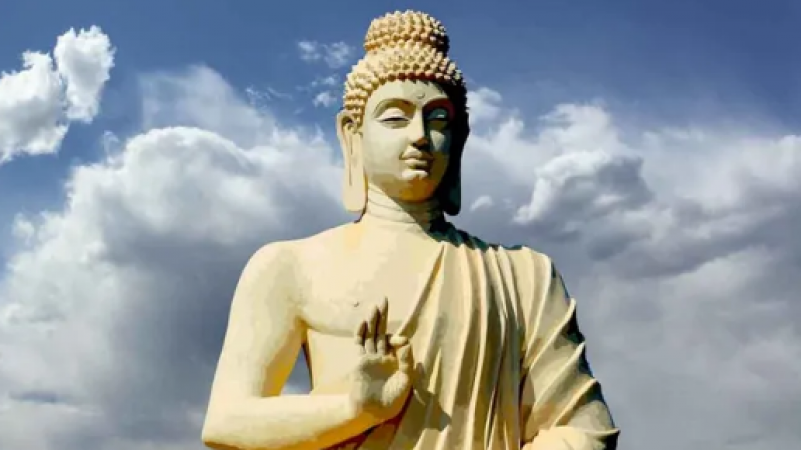
Gautama Buddha, also known as Siddhartha Gautama, was a spiritual leader and the founder of Buddhism. His teachings and philosophy have had a profound impact on millions of people around the world. In this article, we will explore the history of Gautama Buddha, delve into some of the most famous Buddhist temples, discuss how to worship him, and highlight the rules that should be followed by his followers.
The Life and Teachings of Gautama Buddha:
Gautama Buddha was born in Lumbini, present-day Nepal, in the 5th century BCE. He was born into a royal family and lived a luxurious life. However, he became disenchanted with the materialistic world and renounced his princely lifestyle in search of spiritual enlightenment.
After years of meditation and self-reflection, Gautama Buddha attained enlightenment under a Bodhi tree in Bodh Gaya, India. He then began teaching the Four Noble Truths and the Eightfold Path as a means to end suffering and achieve liberation from the cycle of birth and death (samsara).
Buddhist Temples and their Significance:
Buddhist temples, also known as pagodas or stupas, are places of worship and reflection for Buddhists. They hold immense significance in Buddhist culture and serve as reminders of Gautama Buddha's teachings and his enlightenment.
Mahabodhi Temple: Located in Bodh Gaya, India, the Mahabodhi Temple is one of the most revered Buddhist temples. It is the place where Gautama Buddha attained enlightenment and is a UNESCO World Heritage site. Pilgrims worldwide visit this temple to pay their respects and meditate under the Bodhi tree.
Shwedagon Pagoda: Situated in Yangon, Myanmar, the Shwedagon Pagoda is a majestic golden structure that houses several relics associated with Gautama Buddha. It is considered one of the most sacred Buddhist sites and attracts thousands of devotees and tourists.
Borobudur Temple: Located in Central Java, Indonesia, the Borobudur Temple is the world's largest Buddhist temple. It is a magnificent structure adorned with intricate stone carvings and offers a breathtaking view of the surrounding landscape. This temple is an important pilgrimage site for Buddhists.
Worshiping Gautama Buddha:
Buddhist worship practices vary across different cultures and traditions. However, some common elements can be found in most Buddhist worship rituals.
Meditation: Meditation plays a central role in Buddhist worship. Practitioners often engage in silent meditation to calm the mind, cultivate mindfulness, and develop a deeper understanding of Gautama Buddha's teachings.
Offerings: Devotees offer flowers, incense, candles, and food as a sign of respect and gratitude to Gautama Buddha. These offerings symbolize impermanence, purity, and the generosity of the followers.
Chanting: Chanting is a common practice in Buddhist worship. Reciting sutras or sacred texts in Pali, Sanskrit, or the local language is believed to bring spiritual merit and create a harmonious atmosphere.
Prostrations: Prostrations, or bowing, is a physical gesture of reverence and humility. Buddhists may perform full prostrations, kneeling and touching their foreheads to the ground, or simple bows to express their devotion.
Rules to Follow:
Buddhism emphasizes ethical conduct and the cultivation of wholesome qualities. While there is no strict dogma, there are general principles and guidelines that Buddhists strive to adhere to.
Five Precepts: The Five Precepts form the basic moral code for Buddhists. They include refraining from killing, stealing, engaging in sexual misconduct, lying, and consuming intoxicants. These precepts serve as a foundation for leading an ethical and mindful life.
Mindful Speech: Buddhists are encouraged to practice mindful speech, which involves speaking truthfully, avoiding harmful or divisive speech, using kind words, and engaging in meaningful conversations that promote understanding and harmony.
Compassion and Kindness: Compassion and kindness are at the core of Buddhist teachings. Buddhists strive to develop empathy and extend lovingkindness towards all beings, cultivating a mindset of compassion in their thoughts, words, and actions.
Gautama Buddha's teachings have inspired countless individuals to seek enlightenment and cultivate peace and compassion in their lives. Through the centuries, Buddhist temples have served as sacred spaces for worship, reflection, and spiritual growth. By following the principles of ethical conduct, practicing mindfulness, and embracing compassion, Buddhists strive to embody the essence of Gautama Buddha's teachings. May the wisdom and teachings of Gautama Buddha continue to guide and inspire all who seek the path to liberation and inner peace.
The Great Pyramid of Giza: A Marvel Aligned with the Cardinal Directions
The Impact of Article 370 on Dalits: Examining Challenges and Concerns
You must know these things before undertaking the Amarnath Yatra in the month of Sawan